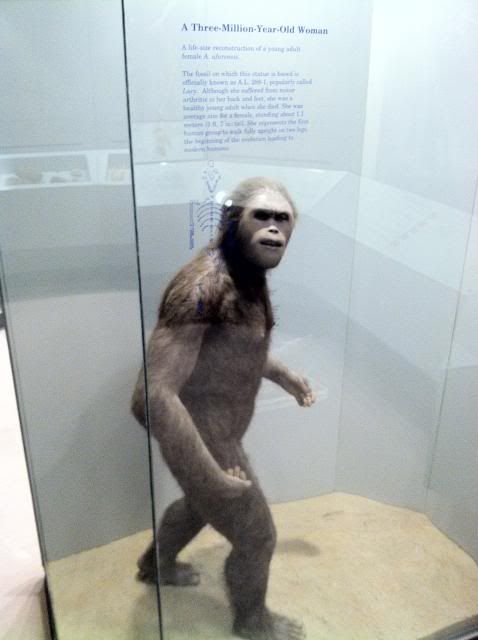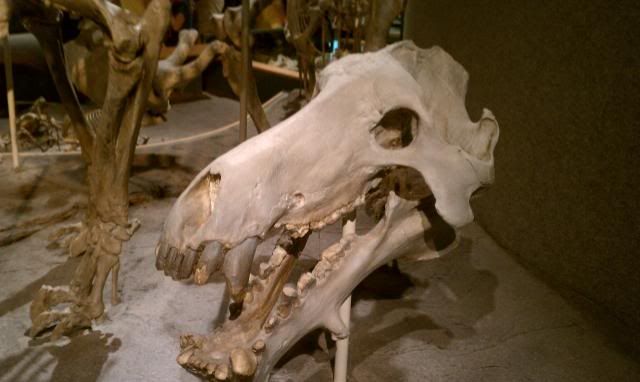Last month I decided to start my new blog series with something that I thought would be very easy for everyone. I am glad to see that within one day the answer was given by Inferno.
I was surprised to see I too knew it at once.
Laughably, unknowledgeable creationists yank our collective chains with their nonsense on this…
Did you get that? I know I missed it the first time I saw it, so let me see if I can help highlight it.
Laughably
unknowledgeable
creationists
yank
Inferno is correct in that this set of bones is commonly known as Lucy. As the story goes when it was first discovered in 1974, Dr. Donald Johanson and his colleagues celebrated with drinks and music. However, the only song they had was Lucy in the Sky with Diamonds, thus the name stuck to the skeleton they found.

(Taken at the Maxwell Museum of Anthropology)
Lucy is an Australopithecus afarensis from eastern Africa and is designated AL 288-1. The reason Lucy is so famous is not that it was the first Australopith found (that belongs to the Taung Child), nor was it the first A. afarensis discovered (that belongs to Al 129-1 a year earlier). No, Lucy is famous because it was the most complete A. afarensis specimen found for nearly half a century, providing nearly 40% of the skeleton, mostly the post-cranial remains. A. afarensis is also famous for being the oldest hominin species for nearly half a century; however, newer finds have taken that place. A. afarensis lived 3.9 – 2.9 million years ago, which places A. afarensis in the Pliocene.
A. afarensis appears to be a perfect transitional species between modern humans and our last common ancestor with chimpanzees. It was bipedal, yet still had long arms for climbing around in trees. Lucy’s skeleton, because it was so complete, enabled scientist to definitively determine that the Australopiths were bipedal because of traits found on Lucy’s legs and pelvis. Later specimens have shown bipedal traits in the skull and foot of A. afarensis.
Moving on to this months challenge:

(Taken at the Denver Museum of Natural History)
This month and every month after, I will stay out of the comment section. That way you can discuss amongst yourself what critter use to own this skull.